
Gran Courdoun or Great Cable
This
was a gigantic transportation system composed by 3 cableways and 2
decauville
which used to bring mineral from the highest mines at 2000 m
elevation down to the main road at 1000 m elevation.
The starting point was at the Sapatlé mines at 2000 m. Tilting trams traveling on a 1600 m decauville brought the mineral to Colletta Sellar where it was transferred to a cableway to descend down to Malzas mines. From this point another decauville went to Punta Croc and then another cableway descended down to about 800 m in the village Perrero situated on the main road.
The history of the structure lies between technology and gossip.
Originally, talc was transported down hill by people carrying some up to 50 kg mineral at a time on their shoulders or by means of wooden sledges.
Cableway were introduced to increase the efficiency although they were not accepted easily by people who were losing their jobs.
This specific structure was proposed in the 1880s by Count Enrico Brayda, head of the operations. He was an extremely good technician used to spend his life on site with the other workers but megalomaniac and too much willing to make gigantic things.
The chairman of the company, Mr. Huntriss living in the UK at the head quarters of the Anglo Italian Talc and Plumbago Mines Company, disagreed on the choice on the ground that it was too expensive.
Count Brayda found a tricky way to do it… He asked another entrepreneur call Grandi to make himself the transportation structure, then he hired it for the company. In 1892 it started to work.
After a while Mr. Huntriss come in, he fired Count Brayda and Count San Martino - the other manager - and took personally the management.
Anyway the structure was taken over by the company. It operated from 1892 to 1961 with good results. It was then dismantled but the main structures are still visible.

The starting point was at the Sapatlé mines at 2000 m. Tilting trams traveling on a 1600 m decauville brought the mineral to Colletta Sellar where it was transferred to a cableway to descend down to Malzas mines. From this point another decauville went to Punta Croc and then another cableway descended down to about 800 m in the village Perrero situated on the main road.
The history of the structure lies between technology and gossip.
Originally, talc was transported down hill by people carrying some up to 50 kg mineral at a time on their shoulders or by means of wooden sledges.
Cableway were introduced to increase the efficiency although they were not accepted easily by people who were losing their jobs.
This specific structure was proposed in the 1880s by Count Enrico Brayda, head of the operations. He was an extremely good technician used to spend his life on site with the other workers but megalomaniac and too much willing to make gigantic things.
The chairman of the company, Mr. Huntriss living in the UK at the head quarters of the Anglo Italian Talc and Plumbago Mines Company, disagreed on the choice on the ground that it was too expensive.
Count Brayda found a tricky way to do it… He asked another entrepreneur call Grandi to make himself the transportation structure, then he hired it for the company. In 1892 it started to work.
After a while Mr. Huntriss come in, he fired Count Brayda and Count San Martino - the other manager - and took personally the management.
Anyway the structure was taken over by the company. It operated from 1892 to 1961 with good results. It was then dismantled but the main structures are still visible.
Malzas.
Picture taken in 2006
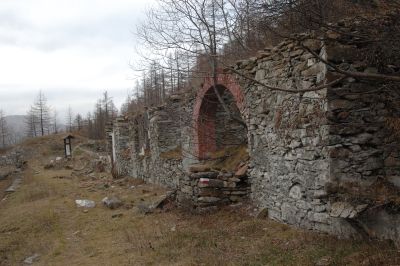
Malzas near the former cableway.
Picture taken in 2006
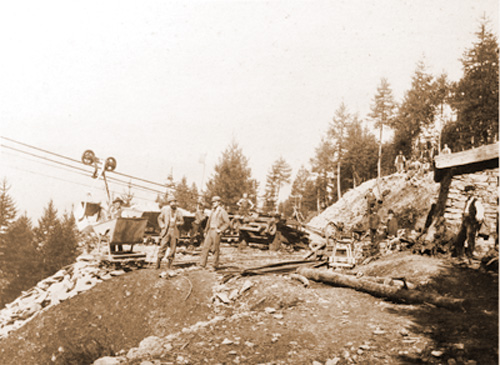
Malzas cable way in 1893.
Source: Come Vivevano… Pinerolo val Chisone e Germanasca fin de siècle (1880-1920); Claudiana 1990

Malzas B&W impressions.
Picture taken in 2006
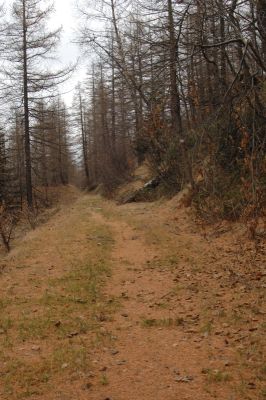
The decauville has become a path..
Picture taken in 2006.
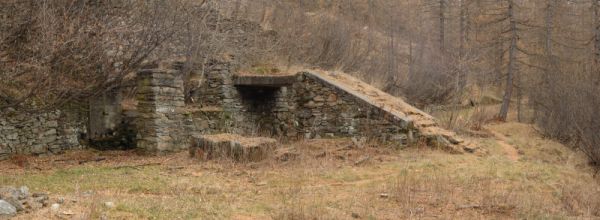
The decauville crosses another one climbing form the lower mine San Carlo
Picture taken in 2006
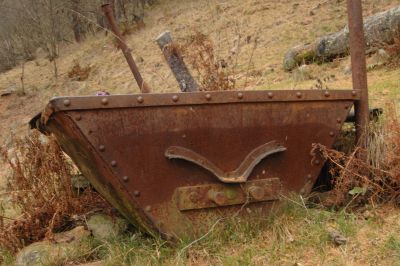
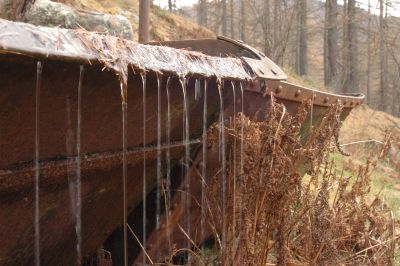
Old tilting trams have become fountains
Picture taken in 2006
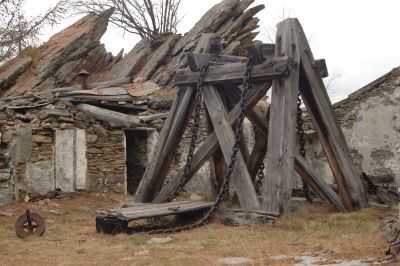
Punta Croc.
The top of the second cableway.
Picture taken in 2006
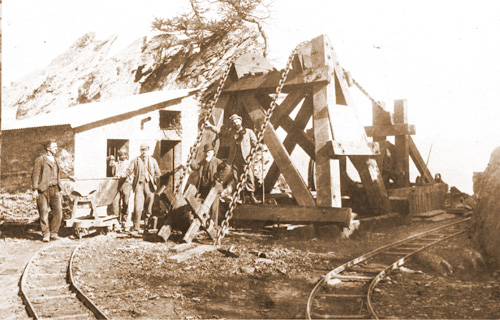
Punta Croc.
The top of the second cableway in 1893.
Source: Come Vivevano… Pinerolo val Chisone e Germanasca fin de siècle (1880-1920); Claudiana 1990
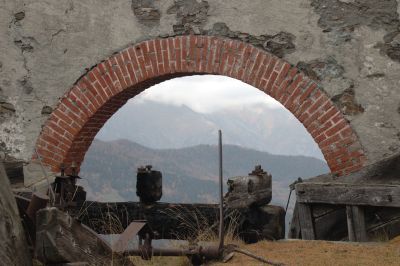
Punta Croc
View trough the building of the top of the second cableway
Picture taken in 2006
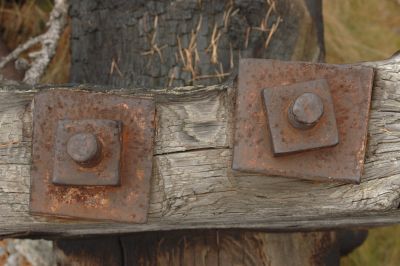
The old age of the machinery can be imagine by the square shapoe of the nuts. Today they are exhagonal...
Picture taken in 2006
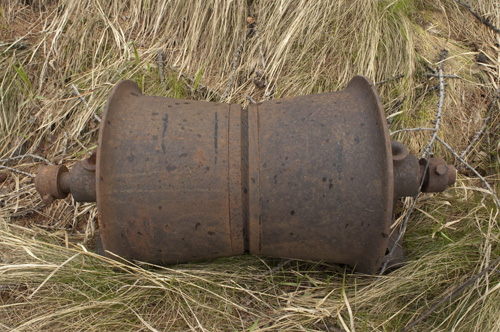
Punta Croc.
Guiding device for the drive cable.
Picture taken in 2007.
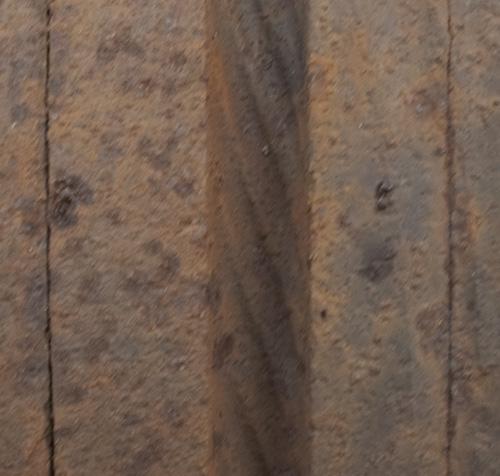
Punta Croc.
Details of the guiding device for the drive cable. Worn out groove in the cast iron
Picture taken in 2007.
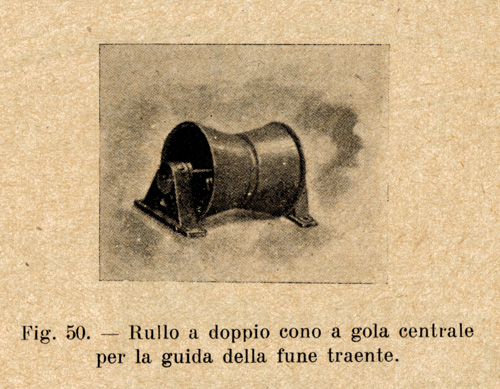
Picture of a guiding device for the drive cable taken from a cable way manual dated 1937:
Come si progetta e si costruisce una teleferica per il trasporto di merci e di persone
Ing. Prof. Odoardo Harley di San Giorgio
G. Lavagnolo Editore.
Torino 1937
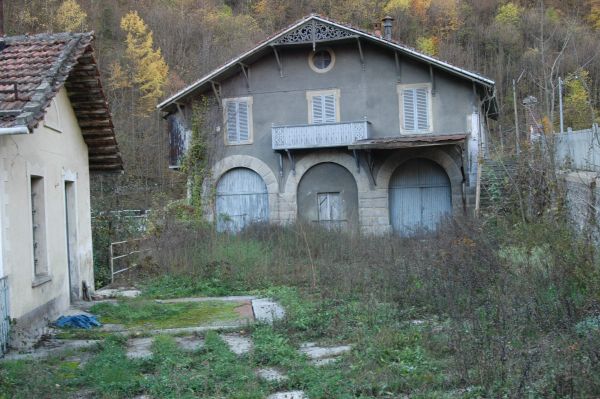
Perrero.
Arrival station of the cableway.
Picture taken in 2006
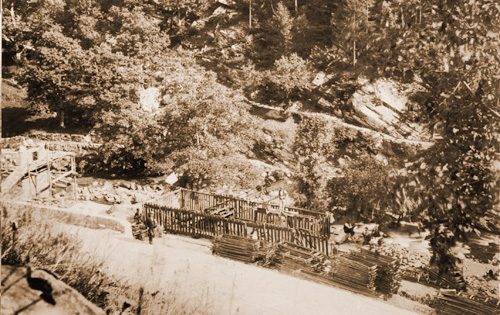
Perrero.
Arrival station of the cableway under construction in 1893.
Source: Come Vivevano… Pinerolo val Chisone e Germanasca fin de siècle (1880-1920); Claudiana 1990

Picture taken in 2006
Malzas near the former cableway.
Picture taken in 2006

Malzas cable way in 1893.
Source: Come Vivevano… Pinerolo val Chisone e Germanasca fin de siècle (1880-1920); Claudiana 1990

Malzas B&W impressions.
Picture taken in 2006
The decauville has become a path..
Picture taken in 2006.
The decauville crosses another one climbing form the lower mine San Carlo
Picture taken in 2006
Old tilting trams have become fountains
Picture taken in 2006
Punta Croc.
The top of the second cableway.
Picture taken in 2006

Punta Croc.
The top of the second cableway in 1893.
Source: Come Vivevano… Pinerolo val Chisone e Germanasca fin de siècle (1880-1920); Claudiana 1990
Punta Croc
View trough the building of the top of the second cableway
Picture taken in 2006
The old age of the machinery can be imagine by the square shapoe of the nuts. Today they are exhagonal...
Picture taken in 2006

Punta Croc.
Guiding device for the drive cable.
Picture taken in 2007.

Punta Croc.
Details of the guiding device for the drive cable. Worn out groove in the cast iron
Picture taken in 2007.

Picture of a guiding device for the drive cable taken from a cable way manual dated 1937:
Come si progetta e si costruisce una teleferica per il trasporto di merci e di persone
Ing. Prof. Odoardo Harley di San Giorgio
G. Lavagnolo Editore.
Torino 1937
Perrero.
Arrival station of the cableway.
Picture taken in 2006

Perrero.
Arrival station of the cableway under construction in 1893.
Source: Come Vivevano… Pinerolo val Chisone e Germanasca fin de siècle (1880-1920); Claudiana 1990

